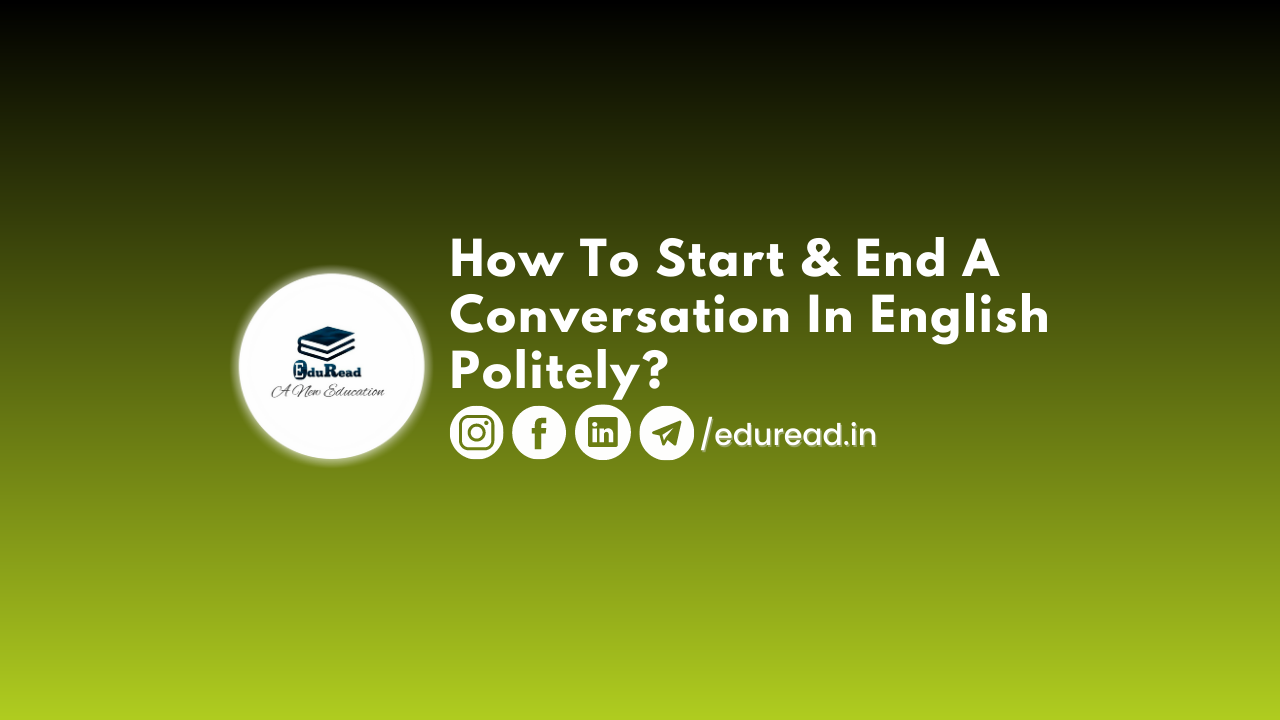Effective communication skills are vital in today’s globalized world. Polite conversation starters and graceful conversation endings can leave a lasting impression. In this blog post, we will explore valuable strategies on how to initiate and conclude conversations in English politely.
Section 1: Polite Conversation Starters (Word Count
Polite conversation starters set the tone for engaging interactions. Here are some techniques to begin a conversation on a positive note:
- Greetings and Introductions: A warm “Good morning/afternoon/evening” followed by introducing yourself is a classic way to start a conversation politely.
- Compliments: Begin with a genuine compliment, such as praising someone’s outfit or expressing admiration for their achievements. This creates a friendly atmosphere.
- Common Interests: Find common ground by mentioning shared interests or current events. For example, “I noticed you enjoy photography. I’m passionate about it too.”
- Open-Ended Questions: Pose open-ended questions to encourage the other person to share their thoughts and opinions. This demonstrates interest and shows that you value their perspective.
- Contextual Statements: Commenting on the surroundings or the occasion can serve as a polite icebreaker. For instance, “This event has such a welcoming ambiance. What brings you here today?”
Section 2: Polite Conversation Endings
Polite conversation endings are just as crucial as the initial interaction. Here are some effective ways to wrap up conversations respectfully:
- Express Gratitude: Show appreciation for the conversation and the time the person has given you. A simple “Thank you for chatting with me” conveys politeness.
- Future Plans: Mention your interest in continuing the conversation or meeting again in the future. This leaves the door open for further interaction.
- Well Wishes: Offer well wishes or compliments as you conclude the conversation. For example, “It was a pleasure speaking with you. I hope you have a wonderful day.”
- Summarize and Recap: Briefly summarize the key points discussed during the conversation. This demonstrates attentiveness and helps solidify the main ideas.
- Exit Strategies: If you need to end the conversation due to time constraints or other commitments, express this politely. For instance, “I’ve enjoyed our conversation, but I must be going now. It was lovely meeting you.”
Section 3: Politeness Across Different Situations
Politeness can vary depending on the context of the conversation. Let’s explore how to adapt polite conversation starters and endings to different situations:
- Formal Settings: Use formal language and expressions when initiating and concluding conversations in professional or business settings. Maintain a respectful tone and address individuals with appropriate titles.
- Informal Settings: In casual conversations with friends or acquaintances, a friendly and relaxed approach works best. Politeness can be expressed through a warm smile, attentive listening, and engaging body language.
- Challenging Discussions: Polite conversation extends to difficult or sensitive topics. Maintain a calm and respectful tone, listen actively, and avoid interrupting. Use phrases like “I understand your perspective” to acknowledge differing opinions.
Section 4: Enhancing Politeness in Conversations
To further enhance politeness in conversations, consider the following strategies:
- Active Listening: Pay close attention to the speaker, maintain eye contact, and avoid distractions. Show genuine interest by nodding, using verbal cues, and asking follow-up questions.
- Empathy and Respect: Treat others with empathy and respect, even if you disagree with their opinions. Validate their feelings and perspectives without judgment, fostering a respectful dialogue.
- Use Polite Language: Incorporate courteous phrases and expressions into your conversation. For example, “Please,” “Thank you,” and “I appreciate your input” demonstrate politeness and show that you value the other person’s contribution.
- Tone and Body Language: Pay attention to your tone of voice and body language. Speak in a calm and friendly manner, avoiding aggressive or confrontational behavior. Maintain a relaxed posture and use open gestures to appear approachable.
- Mindful Interruptions: If you need to interject or contribute to the conversation, do so politely. Wait for an appropriate pause and use phrases like “Excuse me,” or “May I add something?” to ensure a smooth flow of communication.
- Cultural Awareness: Be mindful of cultural differences in communication styles and customs. What may be considered polite in one culture could be seen as inappropriate in another. Research and respect cultural norms to avoid unintentional offense.
Conclusion
Mastering the art of starting and ending conversations politely is essential for effective communication. Polite conversation starters create a positive atmosphere, while graceful conversation endings leave a lasting impression. By incorporating the strategies discussed in this blog post, such as using polite language, active listening, and adapting to different situations, you can cultivate meaningful and respectful conversations. Remember, politeness is a universal language that transcends cultural barriers and fosters stronger connections. So, the next time you engage in an English conversation, start and end it with politeness, and watch how your interactions flourish.
Follow Us for more such content to improve your speaking skills:
To know more, check out here: https://eduread.in/build-your-vocabulary-with-everyday-english-words-speak-new-york/
And visit us for more.
